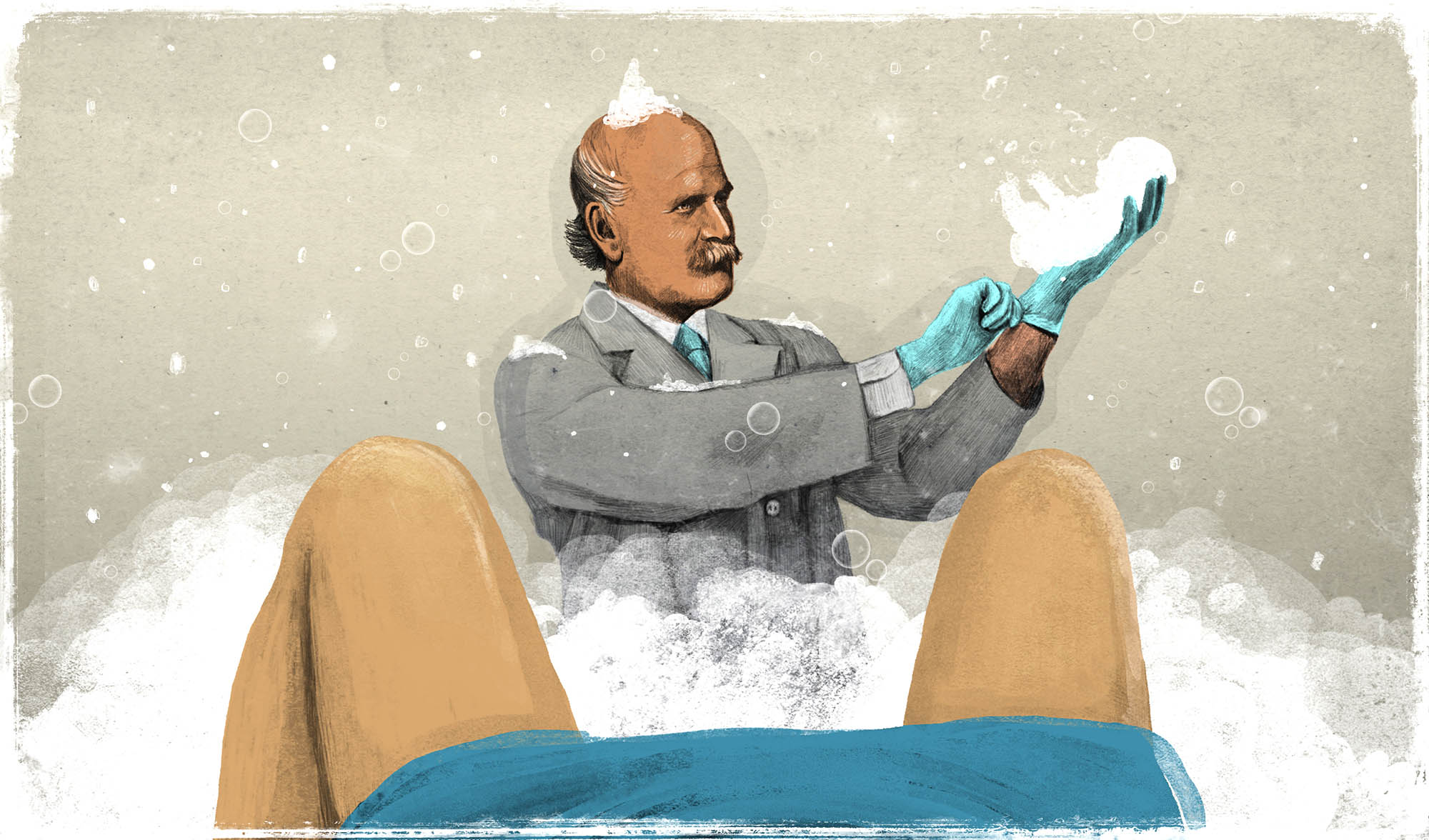
Hand washing is an important part of every modern physician’s pre-patient contact routine. It’s also something that food preparers do when they enter the kitchen, and something that you hope the person that you just shook hands with did when he or she last left the public bathroom. In fact, hand washing as a means to prevent passing on infection is such an ingrained routine that it’s hard to imagine a time when it wasn’t a common part of daily life.
How Far We’ve Come!

Only 150 years ago, every location that we now think of as being clean and sanitary, from food preparation areas to hospital operating rooms, was absolutely loaded with bacteria. Doctors would walk from one bloody, suppurating patient to another with little more than a wipe of a dirty handkerchief. It was a filthy, germy world until Ignaz Semmelweis, and public health scientists such as Joseph Lister and Louis Pasteur who followed, cleaned up our public health act.
In 1847, Dr. Ignaz Semmelweis was the chief physician of a two-ward maternity clinic in Vienna. When he reviewed the statistics regarding the condition of mothers in his hospital, he was unable to account for the fact that one ward had a 500% higher rate of a common and deadly condition called puerperal fever.
Such a huge variance in infection rates could not, he reckoned, be due to chance alone. He noted the ward with the higher mortality rate was staffed by doctors while the other was staffed by midwives. Semmelweis spent months analyzing the situation, but was unable to figure out why male doctors were so much more deadly to mothers than female midwives.
Finally, the light-bulb moment came. There was indeed a big difference between the ward staffed by doctors and the midwife-staffed ward: the doctors performed autopsies and the midwives did not. Semmelweis conjectured that small pieces of matter (this was before Louis Pasteur developed the idea of germ theory) were being transferred from the corpses in the autopsy room to the mothers in the childbirth room and this uncleanliness was the cause of infections. Semmelweis’ solution was straightforward: physicians were to wash their hands thoroughly with soap between patients!
When Semmelweis’ directive was enacted, infections decreased dramatically. Unfortunately, the medical community was slow to adopt his hand-washing advice and years went by before it became mainstream practice.
Even today, people catch colds, flu, and other diseases that could have been prevented by more frequent hand washing. In this edition of Remaking History, we pay tribute to Dr. Semmelweis by making our own batch of disease-fighting soap.
Do-it-Yourself Soap Making
CAUTION:
- While working with sodium hydroxide, always wear safety glasses as well as rubber gloves. Work in a room with good ventilation. Lye can cause chemical burns and may be fatal if swallowed.
- When you mix sodium hydroxide with water, it produces considerable heat. Always use a heat-safe mixing container that is only partially filled. It’s best to mix ingredients over a sink.
- When you mix sodium hydroxide and water, always add lye to water. Adding water to lye can cause the mixture to suddenly erupt or boil.
- Don’t use aluminum pans or mixing containers because they will react with lye, discoloring the aluminum and ruining the soap.
First, be sure you understand that sodium hydroxide, or lye, is a powerful chemical and must never contact skin, eyes, lips, wooden table tops, and so on. It is a strong alkali that reacts with the molecules in fat to turn it into soap. The technical term for this chemical process is saponification. Many people believe that “lye soap” is harsh and tough on skin, but if you measure your ingredients carefully, all of the alkali should be used up in the saponification reaction and the end result should be a gentle but effective soap.














